
Peony
Peony belongs to the Paeoniaceae family and is not related to the rose, as is sometimes thought. Peonies can be recognised by their large, lush and often fragrant flowers, which bloom from relatively small buds. The stems of peonies contain leaves, but no thorns.
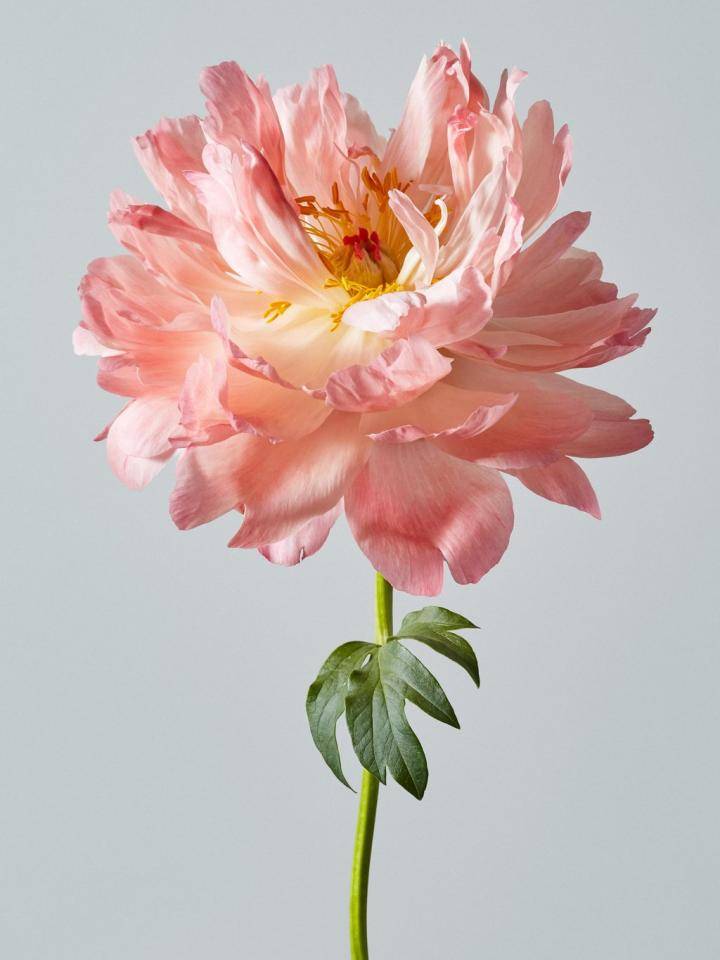
Peonies bloom once a year in spring (between late April and early July). The peak of this spring flower is in May and June. In those months, the peony is widely available as a cut flower. The varieties that flower early in the season (late April/May) often have single leaves and a stronger fragrance and colour. The varieties that flower later (late May/June) more often have double leaves and a weaker scent. Peonies are hardy and able to withstand British winters, but are deciduous as opposed to evergreen.
Those who fall for the charms of peonies are in luck as there are about 1,000 varieties available in all kinds of shapes and colours. They come with a single row of petals, semi-double or double flowers. You can also indulge in colour, with varieties available in soft yellow, romantic white, candy pink or dark red. Some varieties are even bicoloured or change colour. The scent of peonies is particularly attractive and deliciously sweet.
Roughly speaking, there are two types of peonies: herbaceous and bushy peonies (tree peonies). Both varieties are hardy, and each variety has its unique characteristics and charm:

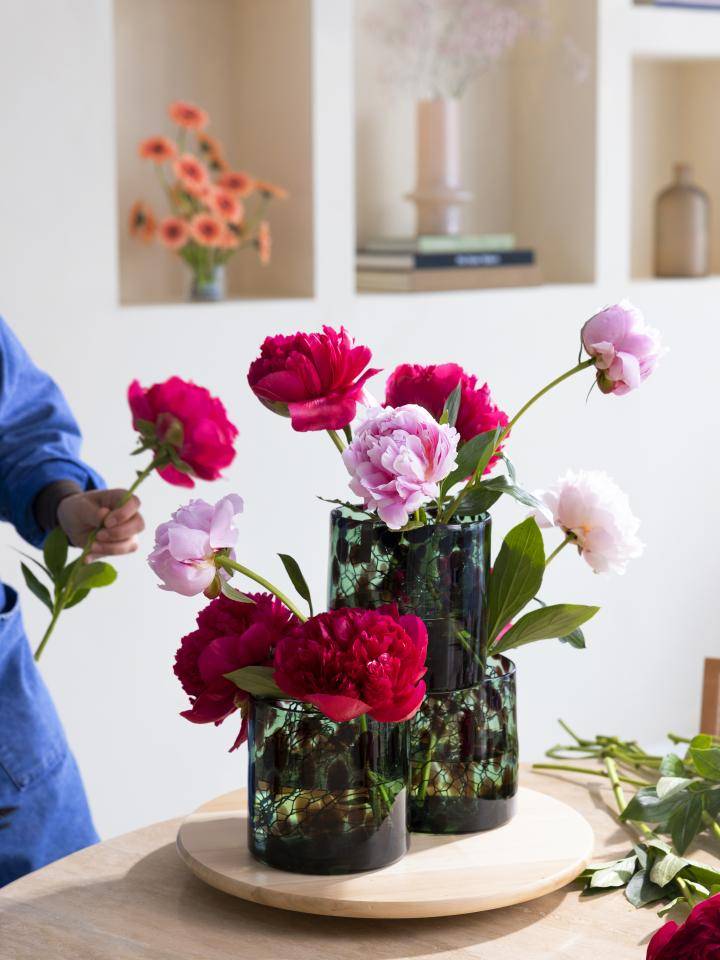
Peonies are perhaps the most beautiful, exuberant and large-flowered beauties you can put into your vase. Have you brought a bouquet of peonies into your home? Then you'll want to enjoy them for as long as possible. The care tips below will help you keep your peonies looking fresh:
Cut the flower stems diagonally with a sharp knife.
Place peonies in a clean vase with water. Choose cold or lukewarm water, depending on how open the flowers already are.
Remove any leaves that drop into the water, to prevent bacterial growth.
Add cut flower food to extend the shelf life of your peonies.
Change the vase water regularly.
Put the vase in the right spot (not in direct sunlight, in a draught and or next to a fruit bowl).
Note that peony flower buds are small, but when peonies fully bloom, they can become very large (some varieties have a diameter of 15-20 centimetres!). Make sure you don't put too many peonies together in a vase to give them room to bloom.
Is your peony having trouble opening its flowers? Peony buds contain a sticky layer which sometimes makes them stick together. Help your peony by holding the dense bud upside down under a gentle spray of lukewarm water. The flower should bloom within a few days.
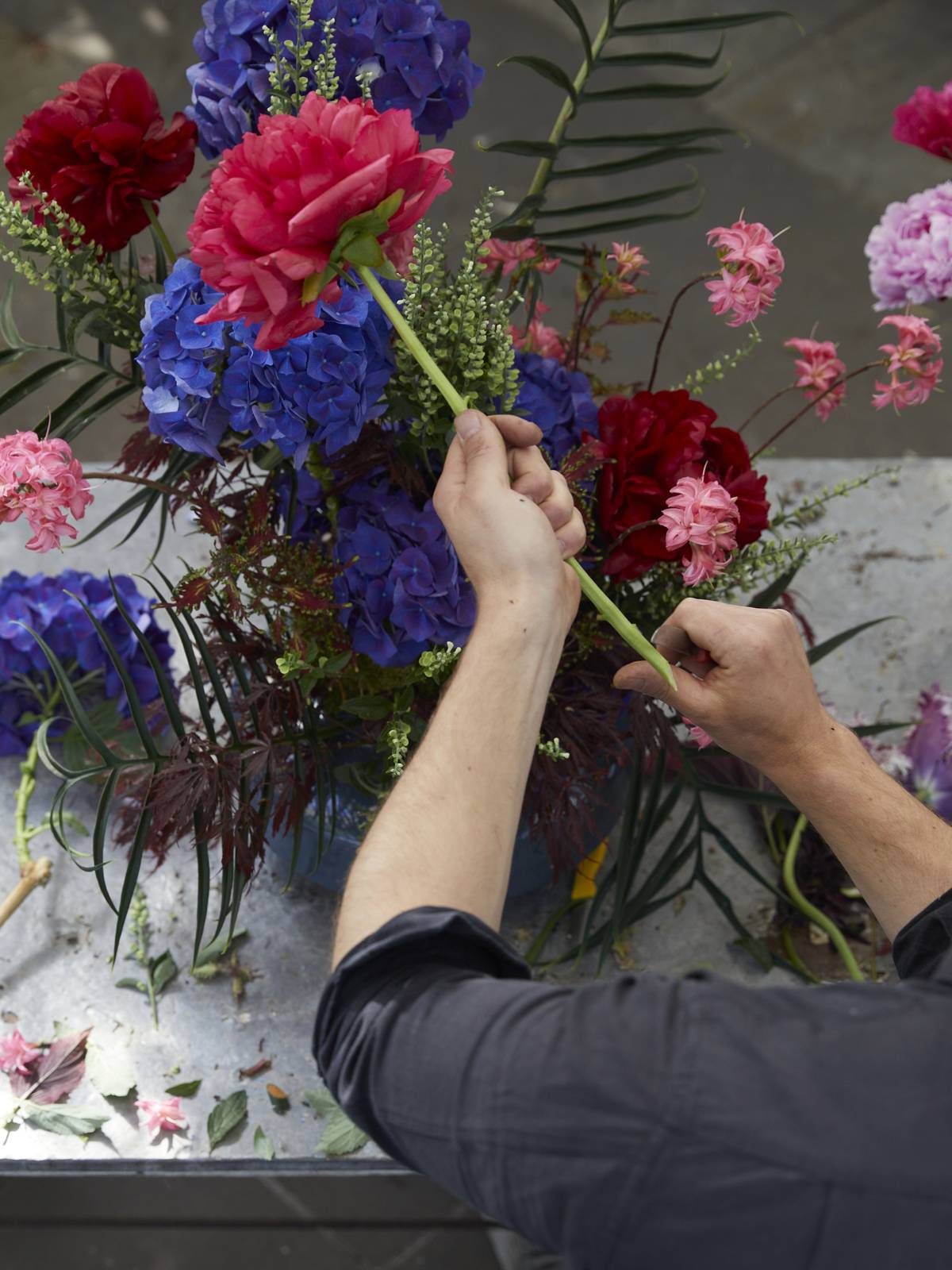

If you want a dazzling show of flowers in spring, we recommend that you plant peonies in your garden. They're very hardy plants which, with the right care, can flower for up to 50 years! They do well in borders and combine perfectly with plants such as lady's mantle, foxglove or catnip. Bees, butterflies and other insects also love this bloom, so it's is a perfect choice to increase biodiversity in your garden.
Check out our tips below for the right positioning, planting and care of peonies. You plant herbaceous peonies and bushy peonies in the same way.
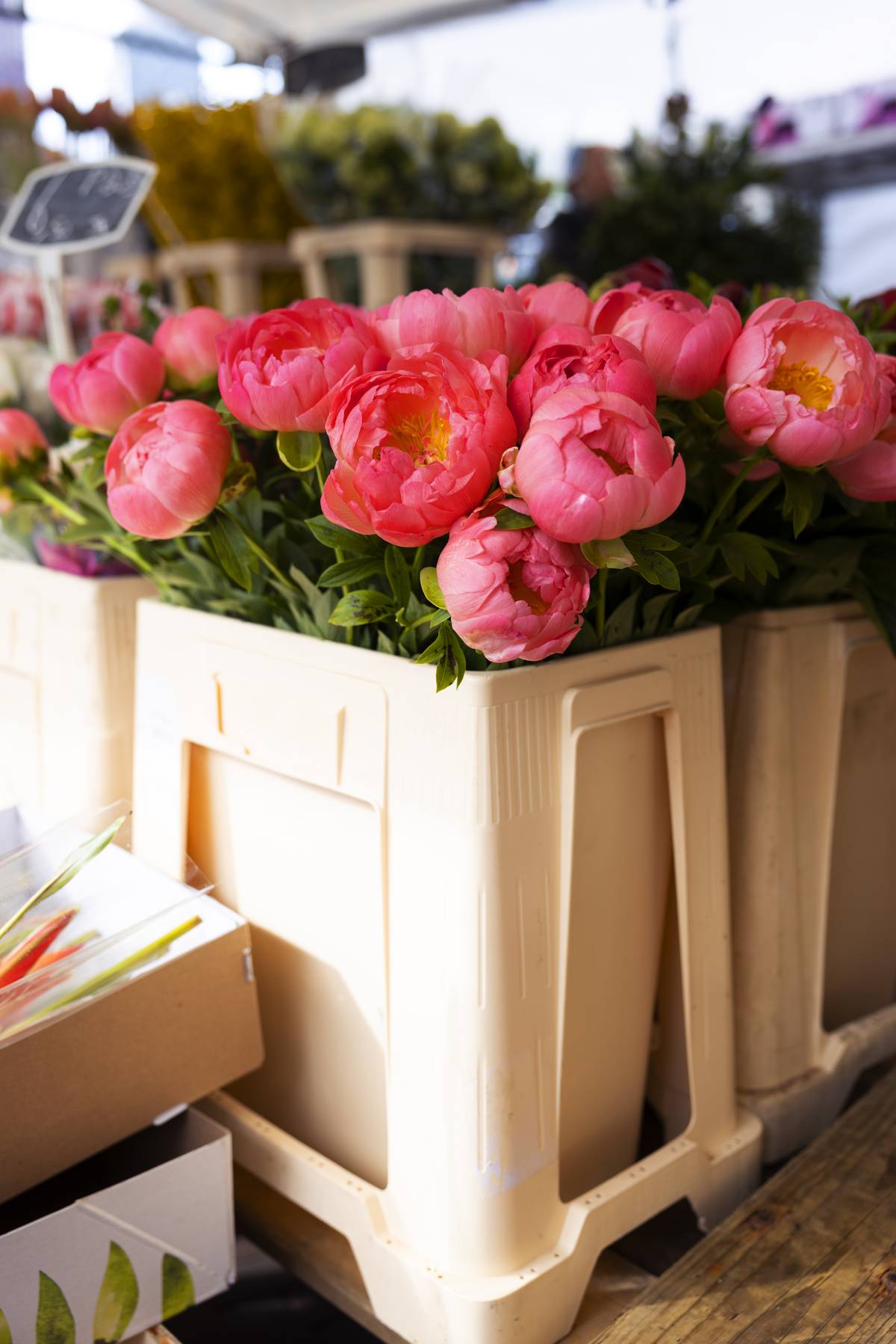
For vigorous growth and flowering and fungus control, it's important to prune your peony. Note that the extent and how you prune them depends on the variety. Herbaceous peonies require more pruning than bushy peonies.
Pruning herbaceous peonies: herbaceous peonies (also called perennial peonies) may be roughly pruned every year. Cut herbaceous peonies back thoroughly in autumn (September/October), to about 5 centimetres above the ground.
Pruning tree peonies: bushy peonies don't necessarily need pruning. If the bush has finished flowering in early summer, remove the wilted flowers. In spring, you can prune away ugly or dead branches to just above a healthy bud (pruning is thus limited to shortening disturbing shoots). If necessary, you can prune the shrub into the desired shape in autumn and/or remove the oldest branches if the plant gets too big or too tall. Don't be tempted to pluck away leaves but let them fall off naturally.
Ants love the sap of peonies, which comes out of the buds. Ants don't harm peonies, so there is no need to fight them. If the ants are numerous and are bothering you, however, there are several things to try. The most common ways are boiling water or an ant bait box, but these ways are less animal-friendly. You can lay down a line of coffee grounds (even cats don't like coffee grounds!), put down copper coins, or chalk a line with pavement chalk (if you have tiles or a patio nearby). You can also put certain plants near peonies which ants don't like, such as lavender and sage.
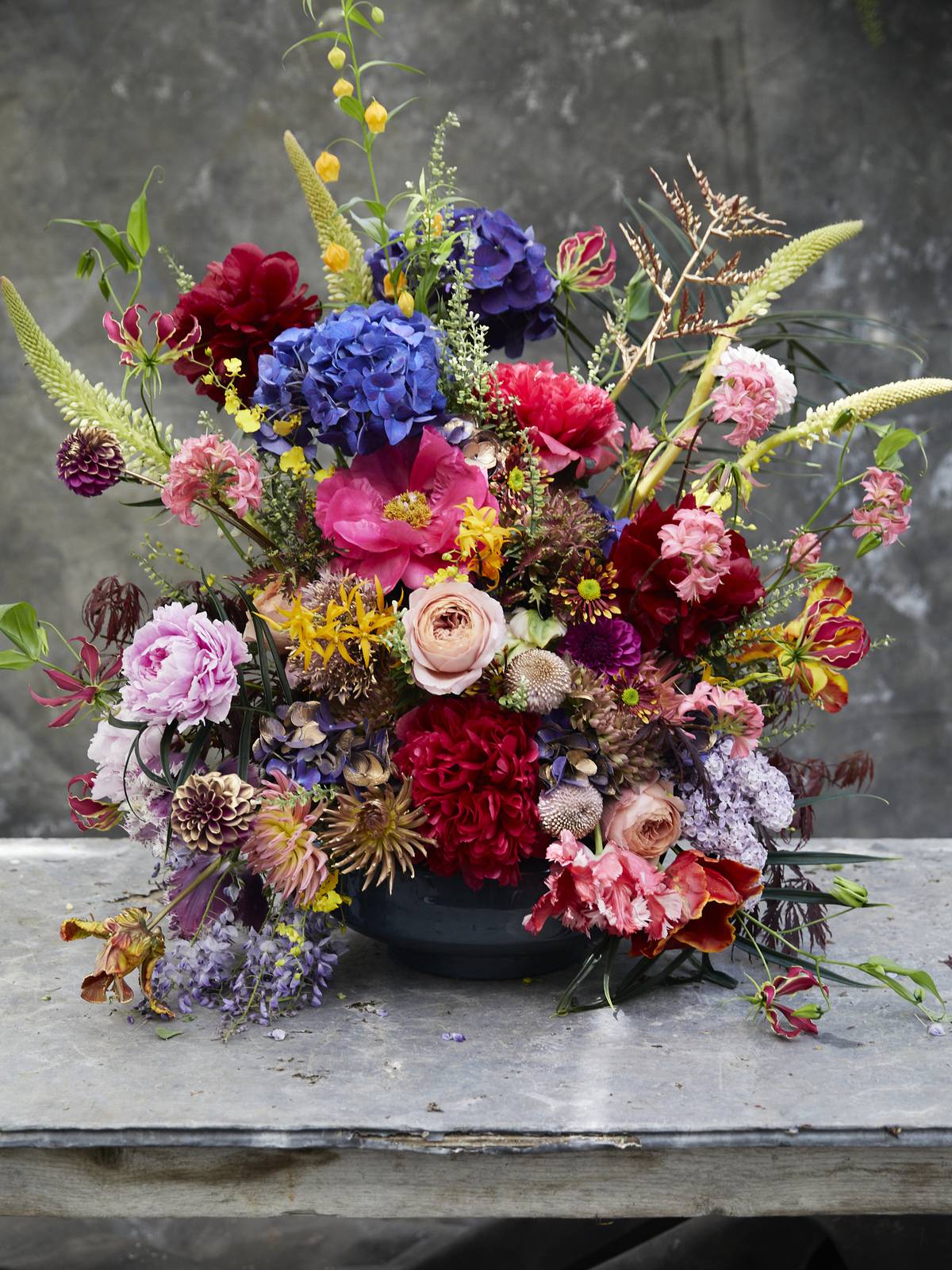
Peony
Peony
Peonies originate from China. It was cultivated not only for its beautiful flowers but for its roots. According to the Chinese, the roots are said to have a fever-reducing and haemostatic effect*. The botanical name Paeonia dates back to classical antiquity. Paieon was the god of healing in Ancient Greece and the flower was named after them. The flowers likely arrived in Europe during the Middle Ages thanks to trade routes and botanical expeditions. Although the exact timeline of the peony's introduction to Europe is not known, it is clear that the flower has long been loved in European gardens.
*The medicinal effect has never been scientifically proven, so we don't recommend you test its medicinal effects.
Peony is not only beautiful flower but is full of rich symbolism. In Chinese culture, the peony has been seen as a symbol of happiness, prosperity, love, fertility and a prosperous life for centuries. In the West, the peony is known for this symbolism, hence its common inclusion in weddings and anniversaries.

Peony is not an edible plant and is toxic to humans and animals, including cats and dogs. Ingestion can lead to various symptoms such as nausea, upset stomach and vomiting. If ingested, contact your doctor or vet.